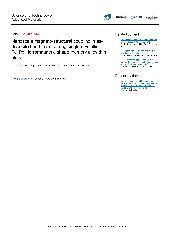摘要
Ferromagnetic shape memory alloys are characterized by strong magneto-mechanical coupling occurring at the atomic scale causing large magnetically inducible strains at the macroscopic level. Employing combined atomic and magnetic force microscopy studies at variable temperature, we systematically explore the relation between the magnetic domain pattern and the underlying structure for as-deposited and freestanding single-crystalline Fe7Pd3 thin films across the martensite-austenite transition. We find experimental evidence that magnetic domain appearance is strongly affected by the presence and absence of nanotwinning. While the martensite-austenite transition upon temperature variation of as-deposited films is clearly reflected in topography by the presence and absence of a characteristic surface corrugation pattern, the magnetic domain pattern is hardly affected. These findings are discussed considering the impact of significant thermal stresses arising in the austenite phase. Freestanding martensitic films reveal a hierarchical structure of micro- and nanotwinning. The associated domain organization appears more complex, since the dominance of magnetic energy contributors alters within this length scale regime.
- 出版日期2013-8
